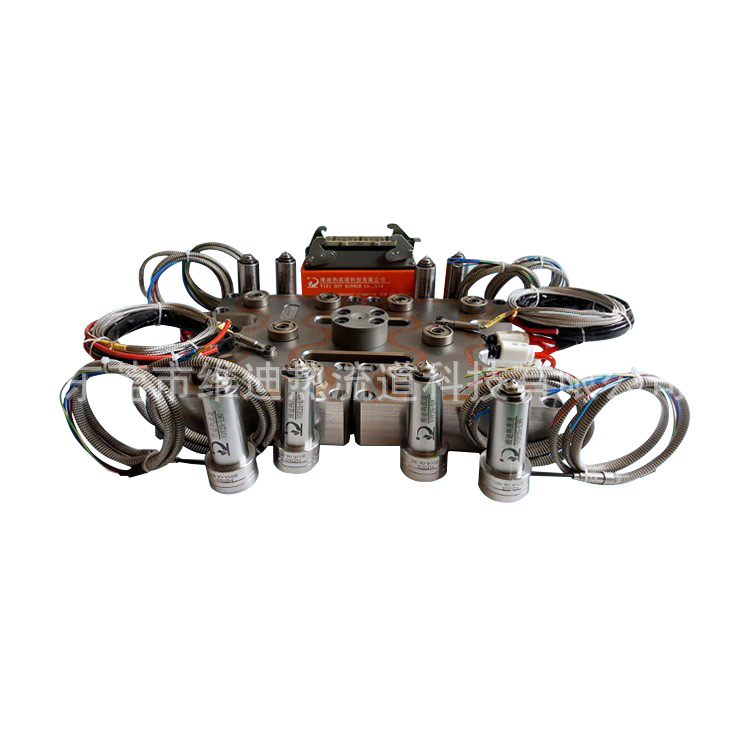 WeChat
WeChat
 Chinese
Chinese
 WeChat
WeChat
 Chinese
Chinese

1. Temperature adjustment: Adjust the temperature of the flow channel plate and nozzle to ensure uniform flow of the plastic melt.
2. Pressure adjustment: Set the injection pressure and holding pressure to prevent flash caused by excessive pressure or material shortage caused by insufficient pressure. 3. Speed adjustment: Optimize the injection speed and pressure-holding switching points to ensure rapid melt filling of the cavity. 3. Flow Observation 1. Observe the melt flow through a test mold to check for any issues such as retention, blockage or excessive temperature difference. 2. Use an infrared thermal imager or temperature sensor to detect the temperature distribution of the runner plate to ensure uniformity. Iii. Production Monitoring 1. Real-time monitoring 1. Continuously monitor the parameters of the injection molding machine (temperature, pressure, speed) and the status of the hot runner system. 2. Inspect the quality of the plastic parts, such as dimensional accuracy, surface defects, gate marks, etc. 2. Exception Handling1. Abnormal temperature: If the nozzle is clogged, it is necessary to increase the temperature to melt the glue or clean it. If the temperature is too high, the temperature control system needs to be checked.
2. Pressure fluctuation: Adjust the injection pressure or holding time to ensure stable melt filling.
3. Material degradation: If the plastic part changes color or its performance declines, the barrel temperature should be reduced or the residence time shortened.
3. Process Optimization 1. Adjust parameters based on production data, such as optimizing cooling time and switching multi-level injection speeds, etc. 2. Regularly clean the hot runner system to prevent the accumulation of carbonized substances. Iv. Completion of Processing 1. Shutdown steps 1. Gradually reduce the temperature of the hot runner system to avoid material residue or equipment damage caused by sudden cooling. 2. After the final mold production is completed, empty injection is carried out to clear the remaining material in the barrel. 2. Equipment Maintenance 1. Turn off the power supply, clean the mold and the hot runner system, and inspect the nozzles, heating elements and other vulnerable parts. 2. Record production data to provide reference for subsequent production. 3. Material Treatment 1. If materials are to be replaced, the hot runner system must be thoroughly cleaned to prevent material residue and contamination. 2. For heat-sensitive materials, special cleaning materials (such as HDPE) should be used for cleaning. Notes
\ n \ n - Safe operation: Protective equipment must be worn for high-temperature equipment to avoid scalding.
\ n \ n - Material matching: The hot runner system needs to be matched with the material properties. For example, for high-temperature materials, high-temperature resistant nozzles should be selected.
> Energy consumption management: Set the temperature reasonably to avoid increased energy consumption due to excessive heating.
Through the above process, hot runner injection molding can achieve efficient and stable production, improve product quality and reduce the waste rate.About us
Company Profile Corporate culture HonorProducts
Hot runner system Diverter plate Hot nozzle Temperature control box Hot runner parts More>>News
Company dynamics Industry information Technical support Wechat QR code
Wechat QR code